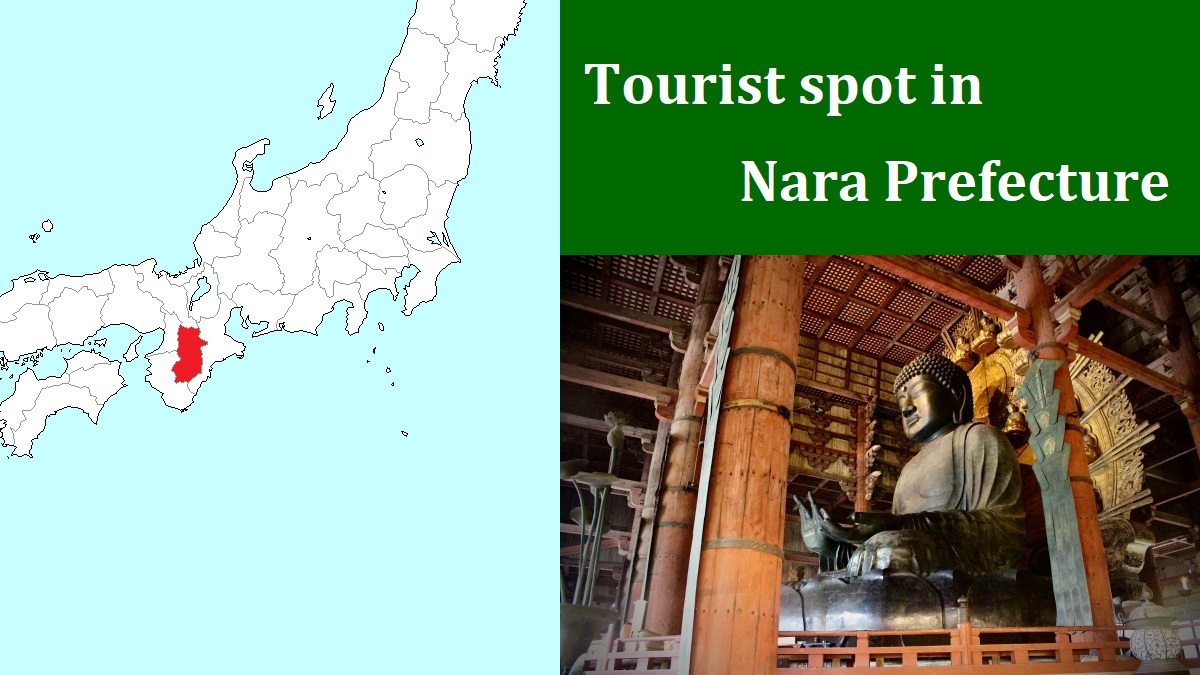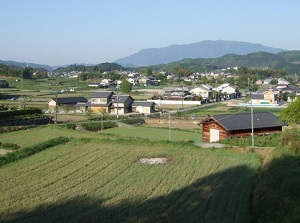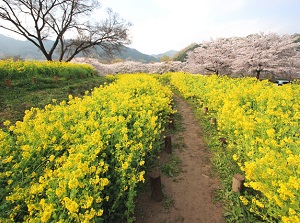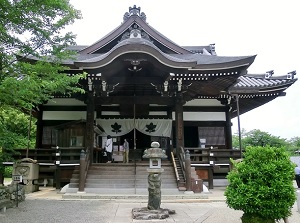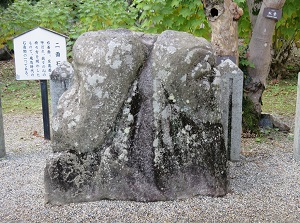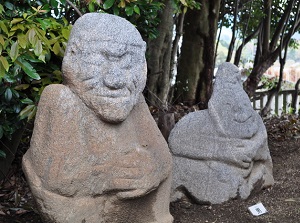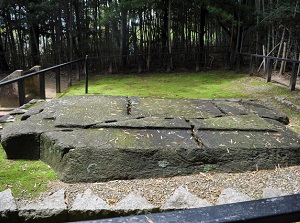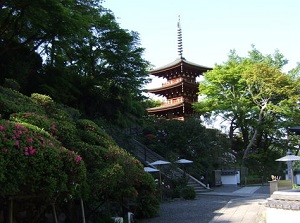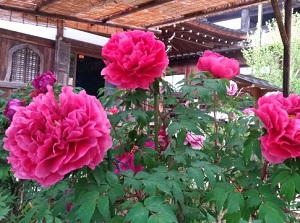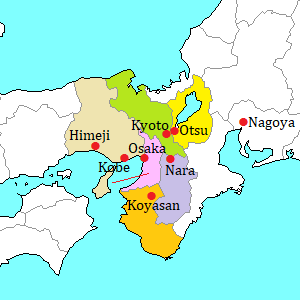Asuka village [明日香村]
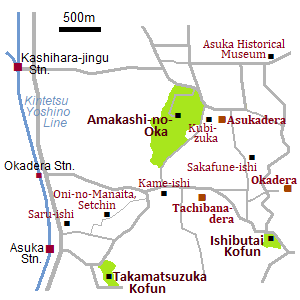
Asuka village ("Asuka-mura" in Japanese) is a village located at the south edge of Nara Basin.
It is located about 30 km south of Nara city.
Asuka was the capital in Japan, before the capital was moved to Nara.
The period was from the late 6th century to the early 8th century.
During the period, many scattered local villages were unified by powerful village gradually, and a state governed by Emperor was formed in this area.
The palaces and temples for the government were built in this area.
The emperors lived in this area, so many ancient burial mounds as the tomb of the emperors in the period remain.
Additionally, Asuka was the area where people had been living since much earlier period.
So whole area of Asuka is the important ruin of the earliest days of Japan.
The main area is on the east side of Yoshino Line of Kintetsu Railway.
The main section is between Kashihara-jingu-mae and Tsubosakayama stations.
This area is designated as "Asuka Historical National Government Park" and is about 5 km from north to south and about 3 km from east to west.
It has gently undulating hills.
To tour around Asuka village, main entrance points are Kashihara-jingu station or Asuka station of Kintetsu Railway.
Route buses running in this area are operated every 30 minutes to an hour.
Rental bicycle is also available.
In this area, there are not so many restautants, cafes and shops.
So, when you tour around this area, you had better provide drinks and box lunch in advance.
Takamatsuzuka Tomb (高松塚古墳)
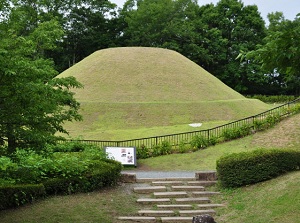
Takamatsuzuka Tomb
Photo by Railstation.net
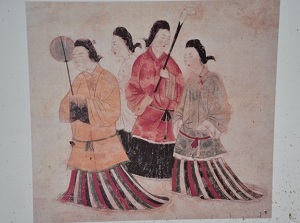
A wall painting in Takamatsuzuka Tomb
Photo by Railstation.net

Takamatsuzuka Tomb ("Takamatsuzuka Kofun" in Japanese) is a circular burial mound constucted around 700.
It is located about 0.6 km east of Asuka station.
The diameters are 23 meters at the lower part and 18 meters at the upper part, and the height is 5 meters.
Colorful wall paintings of dragon, tiger and 16 figures were found inside the stone chamber in 1972, then it had been in the spotlight.
It is thought that this was the tomb of a person in a very high position.
To preserve the valuable wall paintings, the stone chamber is closed.
The museum is near the tomb, and we can see the replica of the pictures.
Tachibana-dera temple (橘寺)
Tachibana-dera is a Buddhist temple of Tendai school which was introduced from China in the 8th century.
It is located about 1.7 km northeast of Takamatsuzuka Tomb.
It is said that Prince Shotoku (574-622) was born near this temple.
And, it is said that he founded this temple around the early 7th century.
The first temple was very large, but it had declined since the 12th century.
Main temple was rebuilt in 1864, and the statue of Prince Shotoku has been enshrined.
In the precinct, there is an old carved stone Nimen-seki about 1 meters high.
Two faces are carved on the stone, and one is a good face and another is an evil face.
It is said that they mean two aspects of human mind.
Popular spots to the east of Takamatsuzuka Tomb

Saru-ishi (猿石, Monkey Stones) are located about 0.4 km north of Asuka station.
Four stone statues with funny faces like monkeys set up near the Tomb of Princess Kibihime (?-643).
These were found around the Tomb of Emperor Kinmei (509-571) in 1702, and were moved to here later.
It is not known why such statues had been created in the place.
Oni-no-Manaita (鬼の俎, Devil's cutting board) and Oni-no-Setchin (鬼の雪隠, Devil's lavatory) are located about 0.6 km east of Saru-ishi.
The spots with such fearful names are the remains of large stones.
Oni-no-Manaita is a large flat rock.
The length is about 4.5 meters, the width is about 2.7 meters, and the thickness is about 1 meter.
It had been said that a devil ate people after cooking on this rock.
But it is thought that it was a part of a tomb.
Oni-no-Setchin is also a large rock near Oni-no-Manaita.
The rock is scooped out widely.
It had been said that the devil relieved the bowels at Oni-no-Setchin after he ate people at Oni-no-Manaita.
But it is thought that it was a part of the tomb same as Oni-no-Manaita.
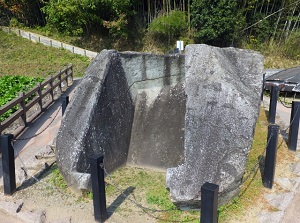
Ono-no-Setchin
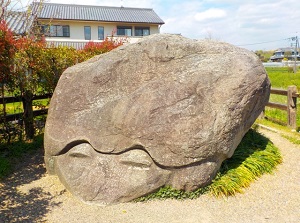
Kame-ishi
Kame-ishi (亀石, Tortoise Stone) is located about 1 km northeast of Takamatsuzuka.
It is a large stone sculptured like a tortoise.
The length is about 3.6 meters, the width is about 2.1 meters, and the height is 1.8 meter, and some say that it resembles a frog rather than a tortoise.
It is unknown when and why this monument was created.
But this is popular for its humorous style.
Ishibutai Tomb (石舞台古墳)
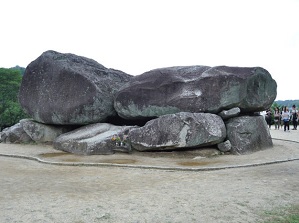
Ishibutai Tomb
Photo by Railstation.net
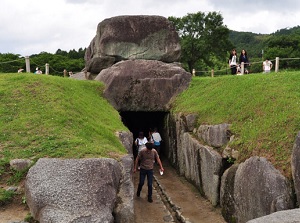
Path under Ishibutai Tomb
Photo by Railstation.net

Ishibutai Tomb ("Ishibutai Kofun" in Japanese) is an ancient tomb constructed with about 30 huge stones.
It is located about 2.5 km east of Takamatsuzuka Tomb.
The overall shape is nearly a rectangular, and there is a burial chamber in it.
We can enter the chamber.
The stones were carried from a mountain, about 3 km away from here.
The total weight of the stones is over 2,300 tons, and the largest stone weighs about 75 tons.
It is thought that this was the tomb of Soga-no-Umako (551?-626) who was a strong politician in that period.
Okadera temple (岡寺)
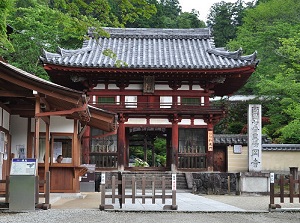
Niomon gate of Okadera
Photo by Railstation.net
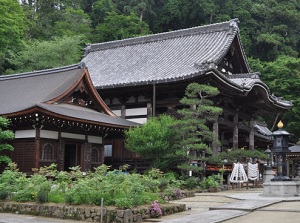
Hondo and Kaizando of Okadera
Photo by Railstation.net
Okadera is a Buddhist temple of Shingon school, one of major Japanese Buddhism schools.
It is located about 0.7 km north of Ishibutai Tomb and is on the mountainside to the east of Asuka area.
It is said that the temple was founded in the late 7th century.
Niomon is the main gate and was rebuilt in 1612.
Main temple was rebuilt in 1805.
A earthen Buddha statue 4.85 meters high is enshrined, and is the largest in Japan.
The temple is known as "Temple of Flowers".
3,000 rhododendrons are popular, and azaleas, peonies, etc. come out from mid-April to early May.
Asukadera temple (飛鳥寺)
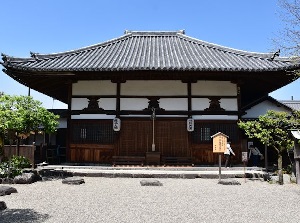
Main temple of Asukadera
Photo by Railstation.net
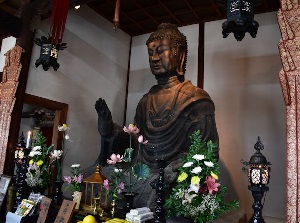
Asuka Daibutsu
Photo by Railstation.net

Asukadera is located about 1.5 km north of Ishibutai Tomb.
It is the oldest Buddhist temple in Japan, and was founded around the end of the 6th century.
Buddhism had been introduced into Japan in the early 6th century.
In the 8th century, the temple was moved to Nara city as Gangoji, but the buildings were remained.
Since that, this temple had declined, but current temple was rebuilt by a donor in Osaka in 1825.
In the main temple, "Daibutsu" (Great Buddha) statue is enshrined.
"Daibutsu" in Todaiji is very famous, but this Asuka Daibutsu was completed in 609 and is the oldest Daibutsu in Japan.
It is made of copper.
The height is about 3 meters, so it is very smaller than Daibutsu in Todaiji.
According to a recent scientific investigation, the parts of head and some fingers are original copper but the other parts were repaired after the period.
Popular spots around Asukadera
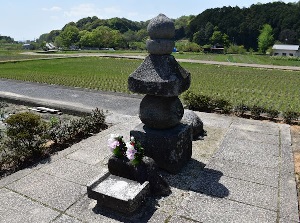
Soga-no-Iruka Kubizuka
Photo by Railstation.net
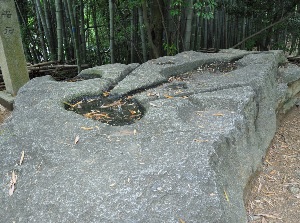
Sakafune-ishi
Photo by Railstation.net
Soga-no-Iruka Kubizuka (蘇我入鹿首塚) is an old monument of stones, and is located about 100 meters west of Asukadera.
"Kubizuka" means "Mound for Severed Head".
When Soga-no-Iruka was killed in Itabuki-no-miya palace about 0.6 km south of this place in 645, it is said that the severed head of him came flying to this place.
It is estimated that the monument was built in the 14th century.
Sakafune-ishi Site (酒船石遺跡) is located about 0.6 km south of Asukadera.
A few stoneworks are dotted on a hill.
Sakafune-ishi is a big stone with 5.5 meters in length, 2.3 meters in width and 1.0 meter in height.
Some dishes and grooves are carved on the upper surface.
Some say that it was a tool to make sake, and the other say that it was a tool to make medicine.
To the north of Sakafune-ishi, another stoneworks had been found since 2000.
It is a water bath shaped like a tortoise, and the water in the bath flows from the head part of tortoise into another round water bath.
It is estimated that it was constructed in the middle of the 7th century.
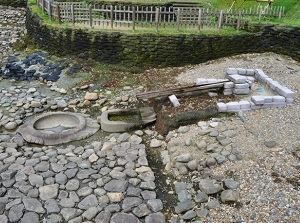
Ancient water bath in Sakafune-ishi Site
Photo by Railstation.net
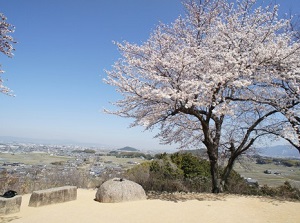
Amakashi-no-Oka
Amakashi-no-Oka (甘樫丘) is a small hill located about 0.5 to 1 km west of Asukadera.
The highest point is at the level of 148 meters, and the main area is a park.
There is an observatory on the hill, and we can enjoy the view of Asuka.
How to get here
By Minami-Osaka Line of Kintetsu Railway, from Osaka-Abenobashi (Near Tennoji) to Kashihara-jingu station, 35 to 40 minutes by express or limited express, about 30 minutes from Yamato-Saidaiji (about 5 minutes from Kintetsu-Nara station).
From Kashihara-jingu to Asuka, by Yoshino Line, about 4 minutes.

